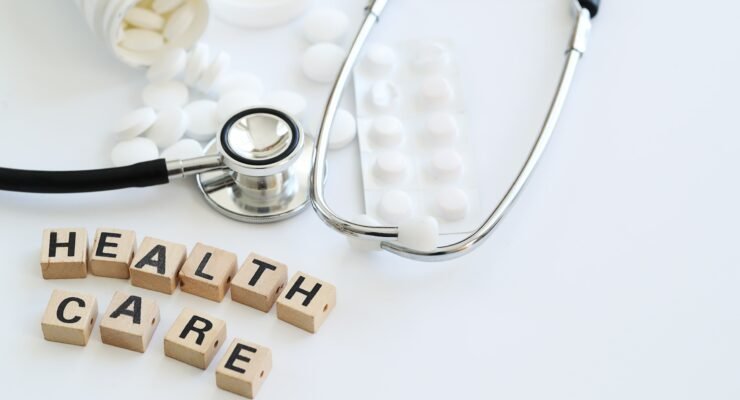
Introduction
Pre-exposure prophylaxis (PrEP) refers to using medication by individuals without an HIV diagnosis to reduce the risk of contracting the virus (Spinner et al., 2016). Typically, PrEP regimens consist of antiretroviral medications combined into a single pill, with tenofovir disoproxil fumarate and emtricitabine being standard components (Brydon, 2018). While in HIV-infected individuals, these antiretrovirals treat the infection and reduce the patient’s viral load, lifelong antiretroviral therapy is essential to prevent clinical disease, namely AIDS (Kelen and Cresswell, 2017). In contrast, the purpose of PrEP in HIV-negative individuals is not to prevent viral transmission or entry into the body but to lower viral replication to a level where the immune system can eliminate infected cells, thereby preventing established HIV infection (Brydon, 2018).
The evidence supporting PrEP’s effectiveness is substantial, particularly in reducing HIV transmission, notably among men who have sex with men (MSM), a key target demographic (e.g., Volk et al., 2015; LeVasseur et al., 2018). Consequently, PrEP is regarded as a practical preventive approach, complementing other strategies like condom use (barrier methods) and male circumcision to prevent HIV infection (Dolling et al., 2014). As a result, PrEP has gained approval for HIV prevention within the National Health Service (NHS) in recent years, building upon its availability in Scotland (Nandwani, 2017). This paper will explore the potential consequences of this approval process, focusing on individual, healthcare, and societal implications.
Impact on Individuals
Changes in PrEP’s accessibility and utilization can significantly affect individuals. Firstly, NHS funding for PrEP can enhance access and affordability to these medications (Nichols and Meyer-Rath, 2017). Previously, PrEP could only be obtained through third-party providers and international pharmacies, leading to elevated costs and concerns about the reliability of sources, especially from online suppliers (Brydon, 2018). Ensuring affordable access is crucial for vulnerable groups and socioeconomically disadvantaged individuals who may face a higher risk of HIV infection (Spinner et al., 2016).
The availability of PrEP offers several critical advantages for individuals at risk of HIV, expanding their options for protection. Practical limitations can hinder existing preventive strategies, which limits their real-world applicability (Frankis et al., 2016). For instance, relying on condom use necessitates access to condoms and a positive attitude towards their use, which may not always align due to concerns about reduced sexual pleasure (Dolling et al., 2014). In such cases, PrEP is an alternative to condom use, empowering individuals to manage their health risks proactively (Frankis et al., 2016).
Furthermore, religious beliefs, cultural influences, and attitudes toward condom usage can sometimes impede traditional HIV prevention practices. The introduction of PrEP may be more readily accepted by individuals grappling with these challenges, augmenting their capacity to protect themselves against HIV transmission (Stewart, 2016). By expanding opportunities and choices for individuals to avert HIV transmission, PrEP promotes healthier sexual behaviors, fosters individual autonomy, and enhances self-efficacy (Harawa et al., 2017). Therefore, the approval of PrEP within the NHS may benefit those most vulnerable to HIV while broadening the accessibility of preventive measures.
It’s worth noting that PrEP usage does not safeguard against sexually transmitted infections (STIs), and the role of condoms in preventing both HIV and STIs remains crucial. This should be communicated to individuals considering PrEP (Storholm et al., 2017). Additionally, the individual benefits can only be realized when PrEP adherence is likely optimal. Non-adherence can diminish the drug combination’s effectiveness and heighten the risk of HIV transmission (Storholm et al., 2017). Therefore, careful selection of the target population and comprehensive education on PrEP usage are essential to ensure these benefits. Currently, the PrEP IMPACT evaluation in England involves 10,000 participants, and the outcomes of this trial will offer valuable insights into the individual advantages of PrEP use (NHS England, 2018).
Impact on Healthcare
From a healthcare perspective, NHS funding for PrEP carries several potential benefits. Primarily, PrEP has demonstrated a substantial impact on reducing HIV transmission rates in both clinical trials and real-world assessments, which could result in a reduced HIV burden in the population (Fonner et al., 2016; McCormack et al., 2016; Sagaon-Teyssier et al., 2016). HIV infection still presents significant morbidity and mortality challenges, making prevention efforts highly advantageous for population health management (Hankins et al., 2015).
Moreover, one of the most significant healthcare impacts of PrEP use among MSM is the potential for cost savings, both in the short and long term, due to reduced HIV infection rates. Cost-effectiveness and modeling analyses have indicated that implementing PrEP for MSM can lead to cost savings, especially with an initial rollout to 4,000 men within the first year (Cambiano et al., 2018). Similar analyses have supported the cost-effectiveness of PrEP based on factors such as the duration of the projections, condom usage within the target population, STI rates in the target population, and the cost of antiretroviral drugs (Drabo et al., 2016; Cambiano et al., 2018; Fu et al., 2018).
The literature has examined the potential drawbacks of PrEP, primarily focusing on the anticipated decrease in condom usage, an increase in sexually transmitted infections (STIs), and the associated costs (Kelen and Cresswell, 2017). Although the relationship between PrEP use and condom use is intricate, no definitive evidence suggests that PrEP leads to reduced condom use during sexual encounters. However, one study indicated that up to 30% of HIV-negative men with HIV-positive partners might be less inclined to use condoms if PrEP were available (Hoff et al., 2015). Nevertheless, this may not necessarily translate into an elevated risk of STIs within committed couples. However, it’s crucial to consider the risk of HIV transmission in individuals who are less likely to use condoms (Hoff et al., 2015). Additionally, the IPERGAY (Intervention Préventive de l’Exposition aux Risques avec et pour les Gays) study discovered similar rates of STIs in PrEP users and non-PrEP users in the context of HIV prevention, implying that PrEP use may not be associated with increased risk-taking behavior (Sagayon-Teyssier et al., 2016).
The cost-effectiveness of PrEP within the NHS will, in part, hinge on the potential for an increase in condomless sex and STIs. Monitoring this possibility will ensure cost savings and population health (Cambiano et al., 2018). As the target population for PrEP becomes more clearly defined and PrEP use expands in England, more data will be required to evaluate the healthcare impact (NHS England, 2018).

Impact on Society
Lastly, at the societal level, it is imperative to consider the broader ethical, social, and cultural dimensions of PrEP usage and its impact. Views on HIV and HIV management often exhibit significant polarization within society and the British media (Jaspal and Nerlich, 2017). HIV is linked to a substantial level of stigma, and any strategies employed to combat infection rates and reduce risks in relationships between HIV-negative and HIV-positive individuals may contribute to the reduction of stigma to some extent (Grace et al., 2018). The psychological toll of stigma should not be underestimated, and initiatives that alleviate stigma can yield substantial benefits for overall quality of life and well-being (Grace et al., 2018).
Nevertheless, a portion of the widely varying views on HIV management within society associate negative connotations with PrEP usage. Some argue against PrEP use for HIV prevention in the general population, fearing that the medication might be perceived as an invitation to promiscuity or condomless sex, which could carry moral and health-related implications (Knight et al., 2016; Brydon, 2018). Similar arguments have historically been raised for various advancements in sexual health services, such as oral contraception, but these concerns generally lack substantial support from research evidence (Calabrese et al., 2016).
Therefore, it is crucial to ensure that public awareness and education regarding the role of PrEP and its immense potential benefits remain unobscured by misinformation or unfounded claims perpetuated by the media (Jaspal and Nerlich, 2017). Healthcare professionals are well-positioned to inform the public and address such sources of misinformation, but they need support from policymakers and national guidelines (Calabrese et al., 2016; Desai et al., 2016). However, broader societal attitudes and the stigma associated with HIV must be challenged through policy and legislative measures to ensure that individuals at risk of HIV have access to PrEP (Serrant, 2016).
Conclusion
In conclusion, the utilization of PrEP for preventing HIV infections in the UK is substantiated by the existing evidence base. It has become a pivotal component of NHS-funded interventions for individuals at risk of HIV infection. The potential repercussions of PrEP usage span the individual, healthcare, and societal levels, encompassing reduced HIV infections, cost savings, and improved availability and accessibility to healthcare services. The implementation of PrEP warrants vigilant monitoring to facilitate public awareness and education, thereby mitigating negative health behaviors and risks.
